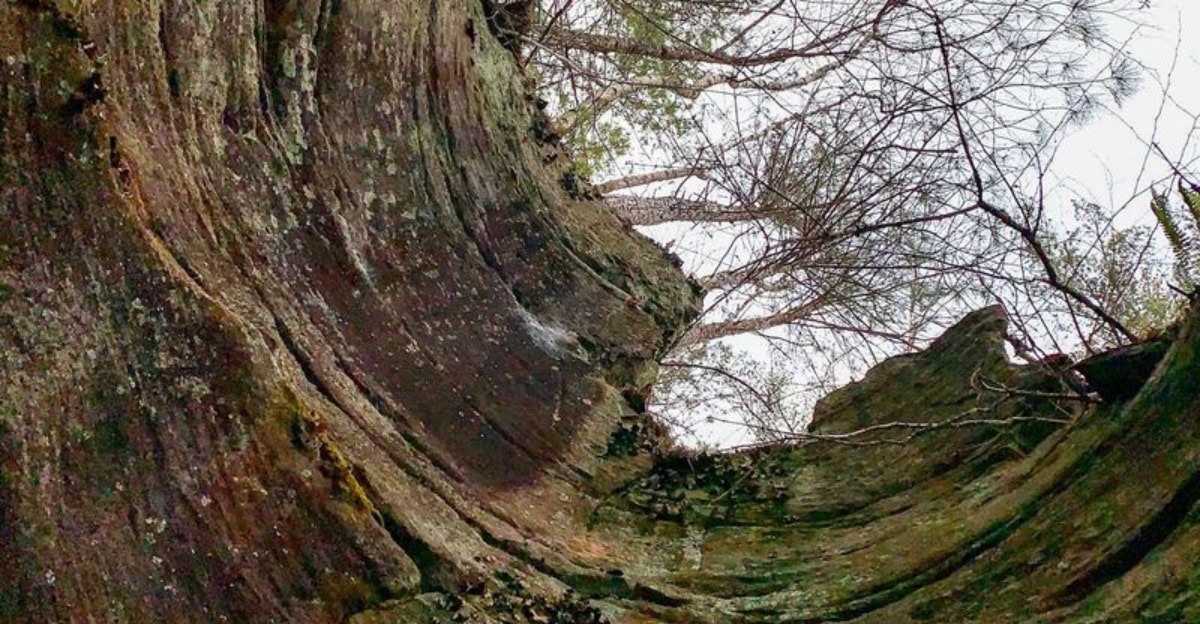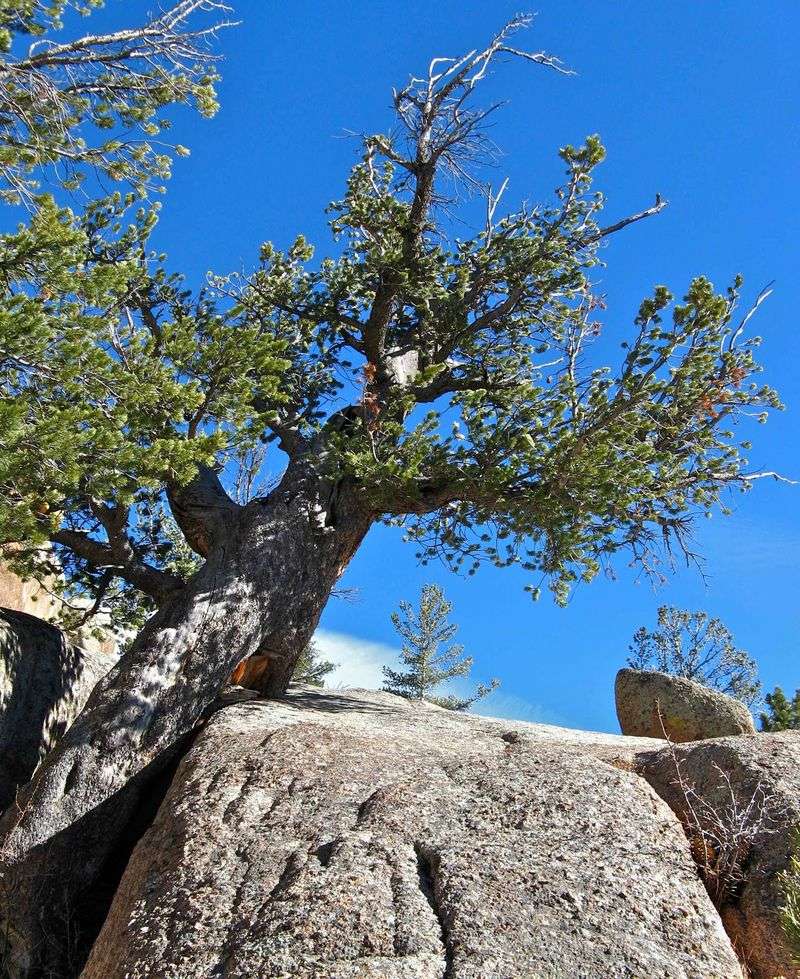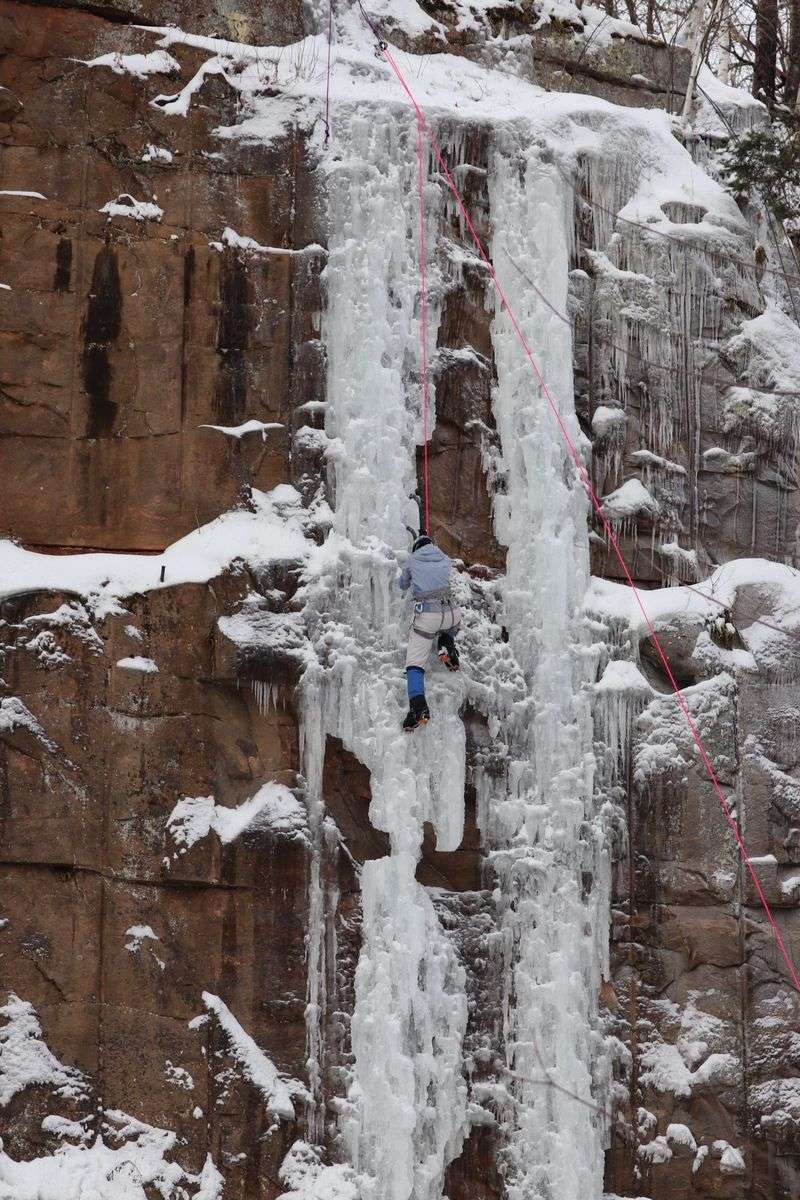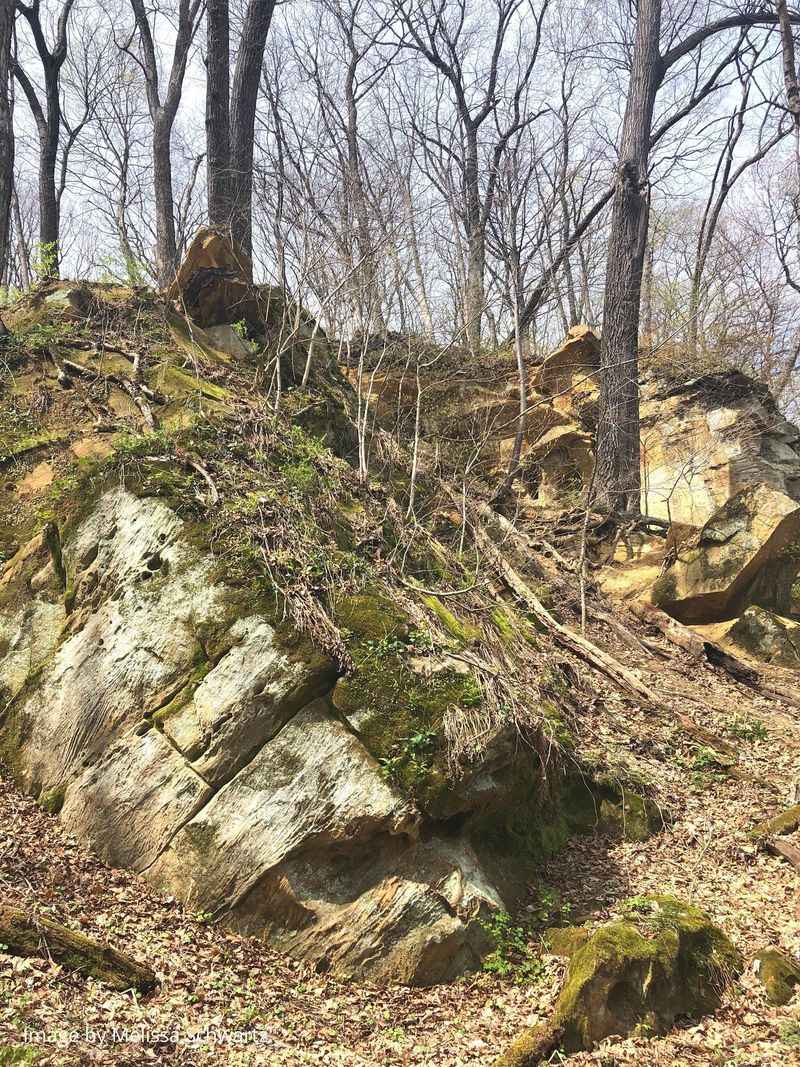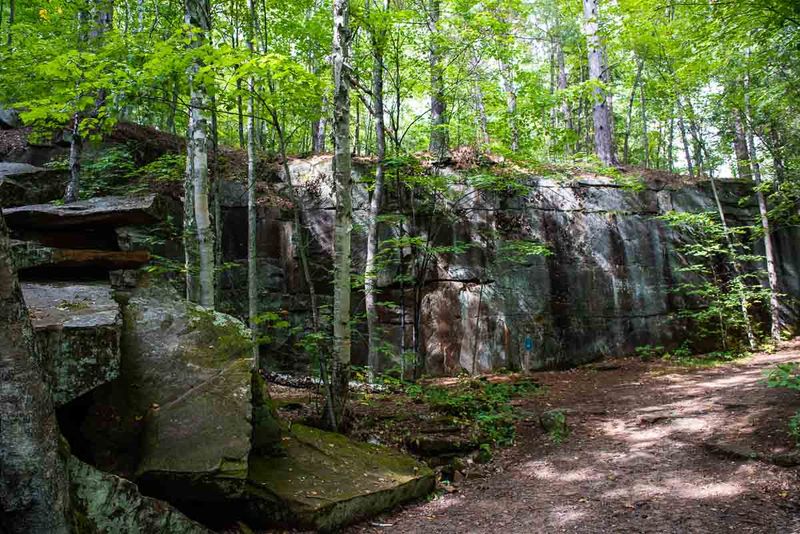Tucked away in east-central Minnesota, the small town of Sandstone sits between Hinckley and Pine City along Interstate 35. This unique place gets its name from the abundant sandstone formations that define its landscape. What makes Sandstone truly special is the remarkable sight of pine trees that appear to grow directly from solid rock, their roots finding life in the tiniest cracks and crevices of the stone.
Nature’s Stubborn Survivors
Along the rugged terrain of Sandstone, Minnesota, pine trees perform what seems like magic. These determined evergreens push their roots into seemingly impossible spaces—hairline fractures in solid rock—and somehow thrive.
Red pines and jack pines dominate this unusual landscape, their seeds settling into crevices where soil barely exists. Over decades, their persistent roots widen these cracks, creating their own growing space in what appears to be solid stone.
Local photographers often capture these trees at sunrise, when golden light illuminates their needles against the warm-colored sandstone backdrop. The contrast between living green and ancient rock creates a visual reminder of life’s persistence. For visitors, these stone-sprouting pines represent nature’s determination to flourish even in the harshest conditions.
Robinson Park’s Rocky Wonders
Former quarry turned outdoor paradise, Robinson Park showcases Sandstone’s most dramatic examples of pines emerging from stone. The park’s 100-foot quarry walls now serve as both climbing destinations and living laboratories for these determined trees.
Winter transforms the park into Minnesota’s premier ice climbing destination, with frozen waterfalls forming where groundwater seeps through the sandstone. Climbers scale these ice formations while surrounded by evergreens that seem to defy gravity, clinging to vertical rock faces.
Summer visitors can follow hiking trails that wind past stone outcroppings where young pines have established footholds in the smallest of spaces. The park’s unusual ecosystem creates a photographer’s dream—especially during golden hour when sunlight warms the reddish stone and highlights the green needles of these persistent pines.
A Geological Marvel Explained
The secret behind Sandstone’s tree-sprouting rocks lies in the area’s unique geology. The town sits atop St. Peter Sandstone—a formation nearly 99% pure quartz sand that’s surprisingly porous despite its solid appearance.
Rainwater gradually dissolves minerals in these rocks, creating tiny pockets where organic matter collects. Pine seeds blown by wind or dropped by birds find these miniature soil deposits and begin their unlikely journey. Their roots follow hairline fractures, gradually widening them through years of growth and freeze-thaw cycles.
What appears miraculous to visitors is actually a testament to evolutionary adaptation. These pines have developed specialized root systems that require minimal soil and can extract moisture from seemingly dry stone. Their shallow, spreading root networks maximize contact with rock surfaces, capturing every available nutrient from what looks like barren terrain.
Quarry Town’s Living History
Sandstone’s identity was forged in the late 1800s when its high-quality stone was prized for building construction across America. The town’s quarries produced the distinctive warm-hued stone used in landmarks like the Minnesota State Capitol.
When quarrying operations slowed in the early 20th century, nature began reclaiming these industrial sites. Pine seeds drifted into abandoned quarries, finding homes in blast holes and natural fractures. Today, century-old pines stand as living monuments to this industrial-to-natural transformation.
Local historians note that some of these trees likely germinated shortly after quarrying ceased, making them silent witnesses to generations of town history. The intertwining of Sandstone’s human and natural stories creates a unique sense of place—where industrial heritage and natural resilience coexist in visual harmony that draws photographers, historians, and nature lovers alike.
Capturing Sandstone’s Stone-Sprouting Pines
Photographers flock to Sandstone year-round to capture its remarkable tree-from-stone phenomenon. Each season offers different perspectives: winter showcases dark green needles against snow-dusted rock; spring brings the bright green of new growth; summer offers lush contrasts; and fall pairs pine evergreens with nearby maples and oaks in brilliant color.
The best spots for viewing these botanical marvels include the Kettle River overlooks, where pines cling to sandstone cliffs above rushing waters. Morning light bathes the eastern rock faces in golden hues, while afternoon sun creates dramatic shadows that emphasize the texture of both stone and bark.
Banning State Park, just north of town, offers additional opportunities to witness this natural wonder along its Quarry Loop Trail. Here, interpretive signs explain how these determined trees establish themselves in seemingly impossible growing conditions—a testament to life’s persistence in the North Woods.
